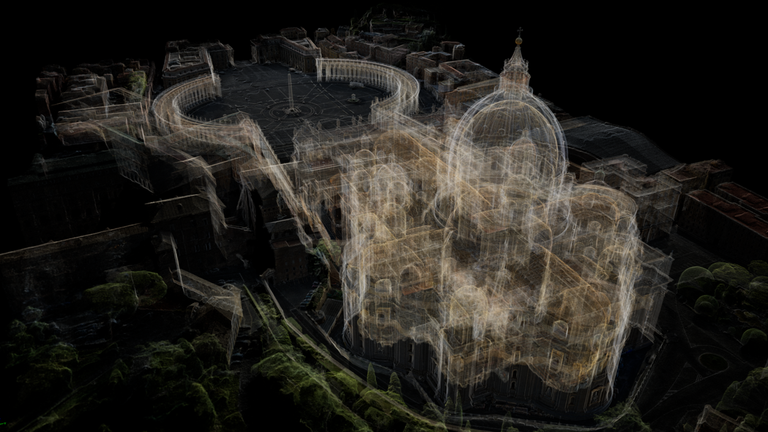Artificial intelligence (AI) has been able to identify structural vulnerabilities invisible to the naked eye in St Peter’s Basilica, the Vatican City, for the first time.
The AI technology was used to create a digital twin of the famous Catholic church – which consists of an ultra-precise 3D computer model that simulates an object in the physical world.
The project, called La Basilica di San Pietro, was developed by Microsoft and the Vatican, in collaboration with Iconem, a French startup specialising in digital preservation.
Over a period of three weeks, drones, cameras and lasers were used to take more than 400,000 detailed images to create an exact digital replica of the exterior and interior of the famous Basilica, including all of its mosaics, frescoes and sculptures.
An AI analysis of the data was able to identify cracks and fissures invisible to the human eye, providing essential information for restoration work.
The AI was also able to reveal previously hidden or lost mosaic tiles and uncover an ornate ceiling.
“As technology like AI propels us into the future, it can also play an important role in preserving our past,” Brad Smith, vice chair and president at Microsoft, said.
Dr Noha Saleeb, associate professor in creative technologies at Middlesex University, said: “AI algorithms, applied to continuous sensor data collected from Digital Twin technologies, can identify damage in structures and materials that is not visible to the naked eye.
“It can also predict specific areas of future deterioration, by making calculations and identifying patterns in the data available.”
The use of digital twin technology in historical buildings has already shown its potential in projects such as the 3D digital model of the Notre-Dame Cathedral in Paris that helped guide reconstruction efforts after the fire in 2019.
“If it wasn’t for the digital replica, they couldn’t have restored it”, Dr Saleeb said of the Notre-Dame.
Professor Mohamed Gamal Abdelmonem, chair of architecture at the University of York, said: “The digital twin technology has become critical to the preservation of many heritage sites as the evolution and affordability of laser and imaging technology can penetrate soils and produce highly accurate copies of existing sites.”
The project was unveiled today at the Vatican with both Pope Francis and Mr Smith attending.
Accessible online, La Basilica di San Pietro also wants to allow people who may never visit the Vatican in person to experience the site with the same level of details that in-person visitors can.
Father Francesco Occhetta, coordinator at the Vatican, said: “For St Peter’s Basilica, the alliance between human intelligence and AI is a bridge towards the future, a historical turning point that has no borders.
“It is possible to view it in every corner of the earth.”

